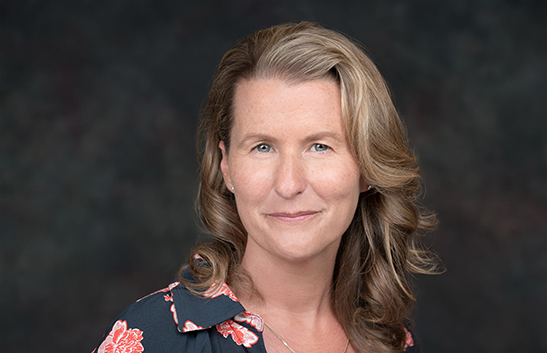Communicating with Clients
Pick Up the !)@#(!)@ Phone and Call Them. Today.
5 min read

Financial Planner, RFC®
Remember that 90’s sound, “When I dip, you dip, we dip”? Now hear it with, “When they call, you call, we call.” It’s kind of like that. After all, the 90’s are popular again, right?
When you want a team member to call a client, you need to literally ask, “Did you call the client on the telephone?” Especially if, like me, a growing number of your workforce are Millennials or Gen Z employees.
Quick scenario:
You: did you reach out to Bob? I want to make sure that we reached out to him.
Employee: yes.
You: what did Bob say? Is everything good?
Employee: I haven’t heard back from him yet.
A few years ago, when I would have a scenario like the one above, I would walk away thinking that while it was odd that Bob, who had called with a pressing question, hadn’t called back yet, but that he was taken care of by my team.
We have five financial advisors in our financial planning practice and serve hundreds of households. Usually, when a client calls, they do not immediately get on the phone with a financial advisor. Instead, we have a process for ensuring that incoming calls from clients are handled in the manner that best serves the client.
How many times have you taken a call from a client that really didn’t need you and needed a team member to help them make an appointment, update forms, relay information, etc.? We do not want to play a no-win game of “pass the client along to whoever can help them” when they call the financial advisors in our office, so our systems are pretty dialed in to deliver massive value for clients.

When Phone Calls Are Warranted
Based on our communication policies, there are some situations where when a client calls in, they need to get to their financial advisor. Here are some examples:
- Death occurs,
- Loss of major source of income,
- Major accident or disability,
- Legal severe action against the client,
- Major financial decision.
When we are outside of client surges (surge is when we deep focus and see clients in a blocked period of time using hyper-focus and productivity skills), there is limited availability on the Financial Advisors calendar. But there are dedicated spots for client callbacks and a well-established process in place for when a major life event, like some of the areas that I defined above, occurs.
Just this week, a client called in when we were outside of surge, and her father, who had also been a client, had passed away. Death calls are immediately returned. It doesn’t matter what we are doing or where the Financial Advisor is. At that moment, we immediately call the survivors and listen. We let them talk and ask a thousand questions as they try and organize what is now left of someone’s life. As Financial Advisors, we know that there should not be much to “do” immediately following someone’s death.
No major financial decisions should be made, if possible, for the first year after someone passes away. Survivors are not in an emotionally healthy state to make decisions during times of trauma.
Our Operations team will start our decedent process and begin the busy work of preparing information. Because our RIA uses the INVICTUS ToolKit from The Perfect RIA, we are able to generate a Beneficiary report and immediately provide it to the surviving client. The report reflects the assets our offices manage, the primary and contingent beneficiaries, as well as the dollar amount the beneficiary will receive. More than anything, it feels like a mental checklist of all the things that the survivor will now have to take care of; our office is handling these.
Imagine now if Bob had called in to tell me that his wife Susan had passed. He left a message that said, “Hello, this is Bob; I really need to talk with Jamie.” That’s it. That is also not uncommon.
My team member hears the message, makes a note in our CRM, we use Infinity, and then instead of picking up the phone to call the client back – the team member sends an email,
“Hi Bob, sorry we missed your call. Jamie wanted me to reach out to you and ensure that everything was ok?”
I did not tell my team member to call. Bob did not articulate that the reason he was calling was a “High Priority” item according to our internal communication policy.
I asked my team member if they reached out to Bob, and they answered yes.
I did not clarify, “did you return Bob’s phone call by calling him back on the phone?”
Now Bob has to write in a cold email that Sue passed and feels that her life and passing thereof couldn’t even warrant a phone call from me as their advisor outside of surge. F-A-I-L. Epic Fail.
Should I have to spell this out?
YES! Reaching out to someone and communicating does not mean the same to Millenials and Gen Z employees as it may mean to more experienced professionals.
When They Call, You Call, We Call
One area that we stress (perhaps continually because it slips sometimes) is that it is imperative to communicate in the best style for the client, not for you.
A powerful coaching tip I once received was to repeat back what someone has said to you exactly – and I mean verbatim – as they said it. This makes your audience feel heard and saves you the embarrassment of jumping to a conclusion about how they feel that may be entirely inaccurate.
This same piece of advice could be true for how we respond to clients. If a client emails, you email. If the email thread is longer than two pieces of correspondence back and forth, then something is lost in translation, and you pick up the phone and talk to one another. That is a rule in our office.
If the client calls, you call them back. You do NOT send the client a well-written email in response to their phone call. In doing so, you may completely miss their point or what the purpose of their call was really about.
If a client prefers to meet in person for non-urgent matters and the financial advisor does not have the availability in their schedules, the advisor may send the client a video message. We have used BombBomb before so that the videos come on our firm’s letterhead with, yes, of course, proper disclosures. Contingent on your compliance requirements, Loom is also a solid choice.
When it comes to delivering massive value to clients, this isn’t about your experience – it’s about theirs.
When they call, you call, we call. Over and over again so that it really drives home the message with your team about styles and methods of communication.
Popular Topics
Value Adds
If you are routinely providing clients with value adds in a consistent, efficient, and deliverable
Still Holding Out on Surge™? 2023 Could Be Your Year
Micah Shilanski, CFP®, busts myths and misconceptions surrounding Surge meetings and shows how
Is That OK With You?
One of the most significant differences between ‘good’ advisors and rock-star level advisors is
Like Coke from a Coffee Mug: Run Your Best Client Meeting
Client meetings can be a dreaded part of a routine or you and your clients’ favorite part of your
5 Questions Every Advisor Should Ask
Matthew Jarvis, CFP®, answers five essential questions every advisor should ask to transform
What You Should
READ NEXT
Want A Lifestyle Practice? Close Your Web Browser
There’s more to having a lifestyle practice than taking time off: Micah Shilanski, CFP®, shares focus hacks to help you become hyper-effective at
“Lifestyle Practice” Doesn’t Mean What You Think It Does
In this article, Micah Shilanski, CFP,Ⓡ clears the air on what a Lifestyle Practice is and when it becomes a cover for a lazy
No One Cares About Your Economic Commentary
Your clients would be better off basing their financial decisions on their horoscope than your economic commentary. Here’s how to address market concerns with your clients.
Start the change today!
Get our 3 most popular power sessions FREE. You and your team will learn about: Time Blocking, the One Page Financial Plan, and the “Buckets of Money” approach.



